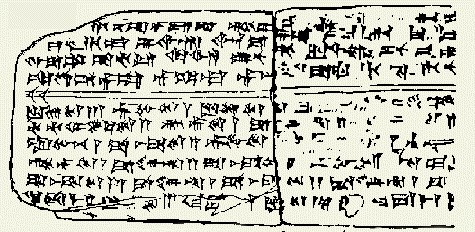
Back الأغاني الحورية Arabic Cançons hurrites Catalan Churritské písně Czech Hurritische Hymnen German Canciones hurritas Spanish Chants hourrites French המזמורים החוריים מאוגרית HE Hurri dalok Hungarian Lagu-lagu Hurri ID Canti Hurriti Italian

| Ugarit |
|---|
 |
| Places |
| Kings |
| Culture |
| Texts |
The Hurrian songs are a collection of music inscribed in cuneiform on clay tablets excavated from the ancient Amorite[2][3]-Canaanite[4] city of Ugarit, a headland in northern Syria, which date to approximately 1400 BC[chronology citation needed]. One of these tablets, which is nearly complete, contains the Hurrian Hymn to Nikkal (also known as the Hurrian cult hymn or "a zaluzi-prayer to the gods," or simply "h.6"), making it the oldest surviving substantially complete work of notated music in the world. While the composers' names of some of the fragmentary pieces are known, h.6 is an anonymous work.
- ^ Giorgio Buccellati, "Hurrian Music Archived 2016-10-09 at the Wayback Machine", associate editor and webmaster Federico A. Buccellati Urkesh website (n.p.: IIMAS, 2003).
- ^ Dennis Pardee, "Ugaritic", in The Ancient Languages of Syria-Palestine and Arabia Archived 2016-05-08 at the Wayback Machine, edited by Roger D. Woodard, 5–6. (Cambridge and New York: Cambridge University Press, 2008). ISBN 0-521-68498-6, ISBN 978-0-521-68498-9.
- ^ Marguerite Yon, The City of Ugarit at Tell Ras Shamra (Winona Lake, IN: Eisenbrauns, 2006): 24. ISBN 978-1575060293 (179 pages)
- ^ Tubb, Jonathan N. (1998), "Canaanites" (British Museum People of the Past)